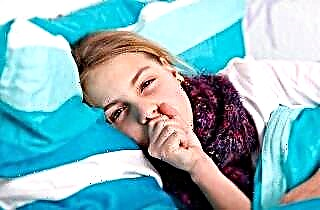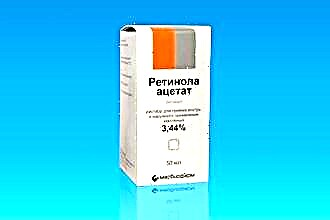 Normally, in humans, the nasal mucosa secretes a small amount of mucus. During the period of a cold, the mucin protein is actively produced, which is responsible for the formation of mucous secretions. As a result of the addition of the infection, snot is formed.
Normally, in humans, the nasal mucosa secretes a small amount of mucus. During the period of a cold, the mucin protein is actively produced, which is responsible for the formation of mucous secretions. As a result of the addition of the infection, snot is formed.
There are several reasons for the formation of mucus in the nose:
- Inflammatory processes in the nasopharynx;
- Overheating of the body;
- Foreign object in the nose;
- Teething;
- Allergic reactions;
- Disruption of the digestive system;
- Babies often gag when feeding. This can also be the cause of the production of a lot of mucus.
There is such a thing as a "false runny nose" that occurs in two-month-old children. Its symptoms are explained by the activation of the salivary glands and excessive salivation. This condition does not require treatment.
How is a runny nose in children under one year old?
In newborns and adults, the course of rhinitis is different. The nasal passages of infants are very narrow, the mucus does not have time to evacuate - it accumulates in the sinuses and thickens. If the discharge is not removed in a timely manner, then it will block the airways. A runny nose in infants is much more severe than in adults.
If you do not suck out snot in newborns in time, children will begin to choke, because they cannot breathe through their mouths.
Therefore, it is extremely important to know how to suck out snot from a child. Infants have too weak immunity. If treatment is not started when the first signs of a cold appear, serious complications can develop. Infection in children spreads very quickly through the respiratory tract, so an untreated runny nose can result in pneumonia.
What does the color of snot in babies mean?
 1. Green snot appears during treatment, when, under the influence of drugs, bacteria begin to die off and come out with mucus. During this period, the discharge is very thick. The main task is to dilute them with special preparations and remove them.
1. Green snot appears during treatment, when, under the influence of drugs, bacteria begin to die off and come out with mucus. During this period, the discharge is very thick. The main task is to dilute them with special preparations and remove them.
2. Watery white snot appears at the initial stage of the disease. The child has difficulty breathing, the temperature rises, symptoms of intoxication of the body are observed. During this period, it is necessary to do rinsing, drip vasoconstrictor solutions as prescribed by the doctor.
3. Yellow discharge appears at the final stage of therapy, when, along with the dying off of microorganisms, waste products are formed. This mucus thickens quickly, forming crusts. Therefore, during this period, snot should be removed especially carefully, with the help of thinning agents, otherwise, you can easily injure the mucous membrane.
How to properly suck out snot from a baby?
In order to effectively remove mucus from the nose in young children, a special snot suction has been developed. Modern nasal aspirators are quite hygienic. They are a construction of a plastic flexible tube, anatomical tip, disposable nozzles, a mouthpiece, a container for secretions, replaceable filters.
How to pump out snot from a baby:
- Flush the newborn's nasal passages with saline or saline solution. After that, it should take up to 10 minutes;
- Remove the softened crusts with a cotton swab;
- Carefully place the tip of the tube against the child's nostril, while the second nasal passage closes;
- The parent puts the other pipe in his mouth;
- Make suction movements with your mouth through the mouthpiece, while mucus enters the container;
- The same actions are done with the other nostril;
- After the procedure, a nasal spray is applied;
- The instrument is thoroughly washed with warm water and soap.
The tube should not be inserted deeply into the nasal passage: the aspirator will in any case evacuate mucus from the farthest parts of the nose.
 During the first procedure, the baby may resist, but it will quickly get used to if it is aspirated regularly. When using such devices, parents need not be afraid of swallowing secretions.
During the first procedure, the baby may resist, but it will quickly get used to if it is aspirated regularly. When using such devices, parents need not be afraid of swallowing secretions.
Nowadays, modern electronic nasal aspirators are being produced, which independently pump out snot.
If no aspirator is available, use the smallest soft tip syringe or syringe:
- Rinse pear thoroughly before use;
- Close one nostril in a newborn, insert the tip of a syringe or pear into the other;
- Squeeze the pear with your fingers, then unclench. If you are using a syringe, then pull the plunger towards you with your free hand;
- When the container is full, empty it, and rinse the instrument (syringe, syringe) thoroughly with warm soapy water. This should be done before each insertion of the tip into the nostril;
- Similar actions are carried out with the second nostril until the nose is completely clear.
Many mothers are interested in how to suck out snot from a baby with your mouth? Very simple. Suck the discharge from the baby's nose and spit it out immediately. Care must be taken to ensure that mucus is not swallowed, otherwise you can get an infection. It will be much more hygienic and easier to use special devices.
Consequences of prolonged rhinitis
It is very important to start the treatment of the common cold on time, otherwise unwanted complications may develop:
- Significant decrease in immunity. In infants, immunity is so weak;
- The overflow of the disease into a chronic form. Difficulty breathing in this case can remain for life;
- Swelling of the mucous membrane;
- Accession of secondary dangerous infections, development of sinusitis, sinusitis, otitis media, tonsillitis, bronchitis, pneumonia;
- The long-term consequences of an untreated rhinitis can be problems with blood vessels and the heart, due to a deterioration in oxygen metabolism during an illness;
- Lagging in physical development.
Runny nose prevention
Preventive measures are not a 100% guarantee that a child will not catch a cold. But still, prevention will significantly reduce the risk of the disease.
 In the children's room, you need to maintain sufficient humidity, regularly clean and ventilate the room. As a preventive measure, aromatherapy with eucalyptus and tea tree essential oils is very effective. In the autumn-spring period, you can rub the heels and wings of the child's nose with warming ointments.
In the children's room, you need to maintain sufficient humidity, regularly clean and ventilate the room. As a preventive measure, aromatherapy with eucalyptus and tea tree essential oils is very effective. In the autumn-spring period, you can rub the heels and wings of the child's nose with warming ointments.
Now you know how to suck out snot from a baby, but do not forget to consult a pediatrician or otolaryngologist for every question regarding the health of children.



